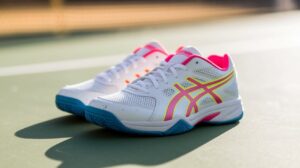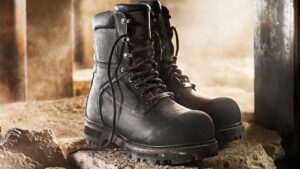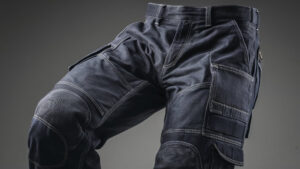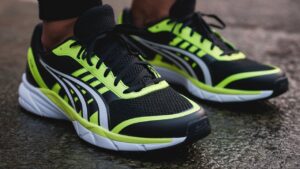When the temperature drops and the cold bites deep, staying warm isn’t just about comfort—it’s about safety. You might think you know all the tricks, but some simple, often overlooked tips can make a huge difference in how you handle extreme cold.
Recommended Best Winter Gloves for Extreme Cold in 2025-2026
| Recommendation | Product |
| Best Overall | rivmount Winter Waterproof Ski Snow Warm Gloves for Women Men |
| Popular Choice | Loccef 2 Pairs Winter Work Gloves for Men and Women |
| Best Value | MOREOK Waterproof & Windproof -30°F Winter Gloves |
| Best Budget | Bruvoalon W429 Winter Gloves for Women & Men |
| Another Excellent Pick | SIMARI Winter Gloves |
Imagine feeling cozy and protected, no matter how icy it gets outside. You’ll discover practical, easy-to-follow ways to keep your body heat locked in and the chill locked out. Keep reading, because your well-being in freezing weather depends on what you do right now.
Essential Cold Weather Gear
Essential cold weather gear keeps your body warm and safe in freezing temperatures. The right equipment helps trap heat and block cold wind. It also prevents frostbite and cold-related injuries. Choosing gear carefully makes a big difference in how well you stay warm.
Focus on clothing layers, fabric types, and protecting hands and feet. Each part of your body needs special attention to keep heat inside and cold out.
Layering For Maximum Insulation
Wearing several thin layers works better than one thick layer. Layers trap warm air close to your skin. Start with a base layer that fits snugly. Add an insulating layer to hold heat. Finish with a shell layer to block wind and water. This system keeps warmth in and cold out.
Choosing The Right Fabrics
Natural fibers like wool keep you warm even when wet. Synthetic fabrics dry fast and keep heat close. Avoid cotton because it holds moisture and cools you down. Look for moisture-wicking base layers. Use fleece or down for insulation. A waterproof outer layer is key for windy or wet weather.
Protecting Extremities
Hands, feet, and head lose heat quickly. Wear insulated gloves or mittens to keep fingers warm. Use thick socks made of wool or synthetic fibers. Waterproof boots stop cold and wetness. A warm hat covers your head and ears. Don’t forget a scarf or neck gaiter to protect your face and neck.
Maintaining Body Heat
Maintaining body heat is crucial in extreme cold. The body loses heat fast through wet clothes, wind, and low temperatures. Keeping warm helps prevent frostbite and hypothermia. This section explains simple ways to hold your body heat.
Staying Dry To Prevent Heat Loss
Wet clothes cool the body quickly. Water pulls heat away from the skin. Always wear waterproof outer layers. Change out of wet clothes as soon as possible. Use moisture-wicking fabrics next to your skin. This keeps sweat away and your skin dry.
Using Heat Packs And Warmers
Heat packs add extra warmth to cold areas. Place them in gloves, pockets, or boots. Use chemical warmers that activate with air or water. Keep a few heat packs handy for emergencies. They help maintain heat when outside for long times.
Proper Nutrition And Hydration
Eating well fuels your body to produce heat. Choose high-energy foods like nuts and chocolate. Drink warm fluids to keep your body temperature up. Avoid alcohol; it lowers your core temperature. Staying hydrated helps your body regulate heat better.
Shelter And Environment
Staying warm in extreme cold depends a lot on shelter and environment. A good shelter blocks cold wind and keeps your body heat inside. Finding the right spot and using natural resources helps a lot. Knowing how to build and protect your shelter can save your life.
Building Insulated Shelters
Use materials like snow, leaves, or branches to build walls. Thick walls keep cold air out and trap warm air inside. Digging a small pit or trench helps lower wind exposure. Cover the roof with leaves or snow for extra insulation. Make the shelter just big enough to hold you. Small space means less air to warm up.
Utilizing Natural Windbreaks
Look for hills, large rocks, or dense trees. These natural barriers block cold wind and reduce heat loss. Set up your shelter behind these windbreaks. Avoid open areas with no cover. Position your shelter on the side away from the wind. This reduces chilling and keeps your shelter warmer.
Safe Fire Starting Techniques
Fire provides heat and helps dry clothes. Gather dry wood and tinder before starting. Use a firestarter or matches safely to avoid accidents. Build a small fire inside a wind-protected spot. Keep the fire low to save fuel and prevent smoke inhalation. Never leave the fire unattended. Extinguish it fully before sleeping or leaving.
Physical Activity Tips
Staying active helps keep your body warm in extreme cold. Moving your muscles creates heat and improves blood flow. But too much or too little activity can cause problems. Follow these tips to balance physical activity and stay warm safely.
Balancing Movement And Rest
Keep moving but take breaks often. Long periods of activity can make you sweat. Sweat cools your body and can cause chills. Rest lets your body recover and keeps your muscles warm. Change activities to avoid getting too tired or too cold.
Exercises To Boost Circulation
Simple exercises improve blood flow and body heat. Try walking in place, stretching your arms and legs, or gentle jumping. These movements push warm blood to your fingers and toes. Better circulation means less chance of frostbite and cold injuries.
Avoiding Sweat And Chilling
Wear clothes that let sweat escape but keep warmth in. Remove layers if you start to sweat. Wet clothes cool your skin quickly. Staying dry helps your body keep heat. Move at a steady pace to avoid getting too hot or too cold.
Recognizing Cold-related Illnesses
Extreme cold can cause serious health problems fast. Knowing the signs of cold-related illnesses helps protect yourself and others. These illnesses need quick action to prevent harm. Recognizing symptoms early can save lives and prevent lasting damage.
Symptoms Of Hypothermia
Hypothermia happens when the body loses heat too fast. The body temperature drops below 95°F (35°C). Early signs include shivering and feeling very cold. You may also feel tired and confused. Slow or shallow breathing is a warning sign. Skin can look pale or bluish. Loss of coordination and slurred speech may appear.
Identifying Frostbite
Frostbite damages skin and tissue from freezing. It often affects fingers, toes, nose, and ears. The skin looks white or grayish-yellow. It feels numb and hard. Blisters may form after warming. The area can be painful or tingly. Severe frostbite turns skin dark and dead.
Emergency Response Actions
Move the person to a warm place immediately. Remove wet clothes carefully and cover with blankets. Offer warm, non-alcoholic drinks if conscious. Avoid rubbing or massaging frostbitten areas. Use body heat to warm small frostbitten spots. Call emergency services if symptoms worsen. Stay with the person until help arrives.
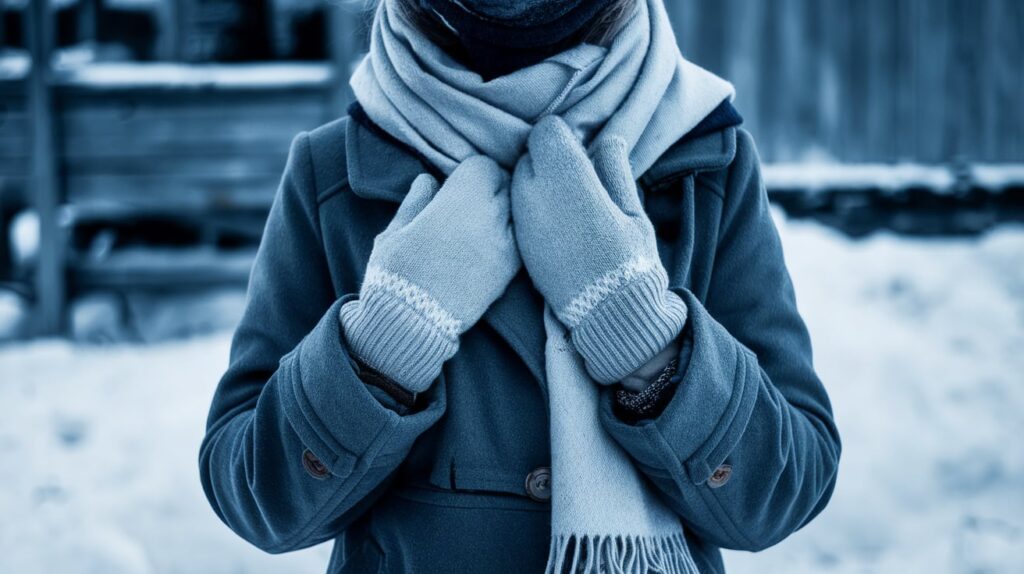
Technology For Cold Survival
Technology plays a big role in staying safe and warm in extreme cold. It helps with navigation, communication, and heat. Modern tools make cold survival easier and safer. Using the right devices can save your life in harsh conditions.
Using Gps And Communication Tools
GPS devices guide you through snowy and icy areas. They help you find your way when visibility is low. Satellite phones and radios keep you connected to others. These tools allow you to call for help if needed. Having reliable communication can prevent dangerous situations.
Portable Heating Devices
Portable heaters provide extra warmth outdoors. Battery-powered heated gloves and vests keep your body warm. Small hand warmers can fit in pockets and gloves. These devices give steady heat for hours. They are light and easy to carry during trips.
Battery Management In Cold
Cold weather drains batteries fast. Keep batteries warm by storing them inside your clothes. Use power banks to recharge devices on the go. Turn off devices when not in use to save energy. Proper battery care ensures your tools work when needed.
Frequently Asked Questions
How Can I Dress To Stay Warm In Extreme Cold?
Layer your clothing with moisture-wicking base layers, insulating middle layers, and waterproof outer layers. Wear hats, gloves, and thermal socks to retain body heat. Proper layering traps warmth and prevents heat loss effectively.
What Are The Best Materials For Cold Weather Clothing?
Wool, fleece, and synthetic fabrics like polyester are excellent for insulation. They wick moisture away and retain heat even when damp. Avoid cotton as it absorbs moisture and loses insulating properties.
How Important Is Staying Dry In Freezing Temperatures?
Staying dry is crucial because wet clothing causes rapid heat loss. Moisture reduces insulation and increases risk of hypothermia. Always wear waterproof gear and change out of wet clothes promptly.
Can Diet Help Maintain Body Heat In Cold Weather?
Yes, eating high-calorie, warm foods boosts metabolism and generates heat. Include proteins, healthy fats, and complex carbs in meals. Stay hydrated with warm drinks to support body temperature.
Conclusion
Staying warm in extreme cold takes careful planning and smart choices. Dress in layers to trap heat close to your body. Keep moving to boost blood flow and stay warm. Drink warm fluids and eat high-energy foods often. Protect your head, hands, and feet from frostbite.
Always check the weather before going outside. Stay safe and listen to your body’s signals. With these simple steps, you can face the cold with confidence. Warmth is possible, even when temperatures drop very low. Stay prepared, stay warm, and enjoy winter safely.

